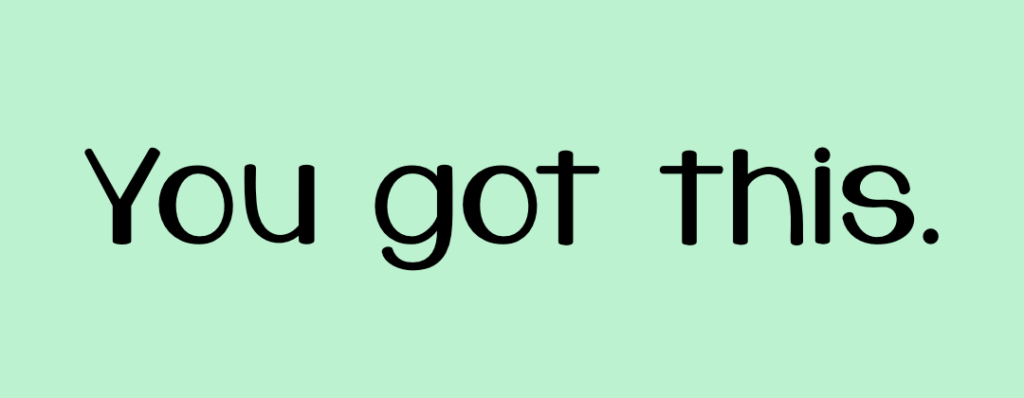
It’s frustrating to see the same whiff showing up over and over again on your Daily Review. Maybe it’s the 9 pm snacking free-for-all that happens every night. Or your seeming inability to drive past the drive-thru on your way to work without pulling in. Or always succumbing to temptation and pouring that second glass of wine, despite your intention to stop at one.
Whatever it is, you can clearly see that this habit is standing between you and progress. But you can’t seem to change it. Day after day, despite your best intentions, it ends up in your whiff column, making you feel like a failure. It seems pretty obvious that you simply don’t have the ability (or will power or strength or resolve or whatever) to change this habit.
It’s hard to keep believing that change is possible when all the evidence seems to point to the contrary. And that’s why it’s so important to collect some evidence that a different choice is possible.
If you have a habit that you want to change, not doing it for a single day is not enough to undo years of daily reinforcement. But it is the beginning of showing your unconscious brain that change is, in fact, a possibility.
What We Know About Ourselves
Our actions and self-talk powerfully shape our beliefs about ourselves and what is possible. In order to start believing that we can be someone who weighs less, we may need to start thinking and talking about ourselves differently. But it’s not enough to decide what we want to choose. We also need to accumulate some hard evidence that we sometimes make weigh less choices.
This is a recurring theme in two of our favorite behavior modification podcasts: The Foodist podcast by Darya Rose and Taking a Break from Drinking by Rachel Hart.
Although Rachel’s podcast focuses primarily on the habit of drinking, the insights and strategies that she employs translate seamlessly to the work we are doing in the Weighless Program. In this episode on Self-Coaching, for example, she discusses the importance of practicing the new behavior we want to cultivate, despite the fact that it is likely to be uncomfortable at first.
The entire episode is worth a listen but if you’re pressed for time, tune in at minute 11:20, which is where she discusses practice.
Rachel expands her exploration of the importance of practice in this episode:
The Foodist podcast is also a wealth of insight and inspiration for the work of behavior change. In each episode, Darya coaches a listener through a dilemma, frustration, or roadblock that is derailing their healthy eating habits and mindset. Scroll down the list of episodes and you are sure to find one (or several dozen) that speaks to you.
But the true power of Darya’s podcast is not finding the one in which Darya “fixes” the problem you’re having. It’s in realizing that the answers don’t come from following someone else’s prescription but in understanding, accepting, and working with our own beliefs, feelings, actions, and reactions.
If you have a long-standing habit that is getting in your way, start by collecting some evidence that a different choice is possible. Recognize that choosing something else may be uncomfortable at first but will get more and more comfortable with practice. Also, remember that habits get momentum the more you practice them – both good and bad – so make sure you fuel the good ones and starve the unwanted ones.


 Being someone who weighs less does not mean that you have to replace your turkey on whole wheat with steamed tofu, brown rice and algae flakes. (Unless that’s something really love.)
Being someone who weighs less does not mean that you have to replace your turkey on whole wheat with steamed tofu, brown rice and algae flakes. (Unless that’s something really love.) There will be times when it’s tough to find the motivation to stick with the effort. Perhaps you’re not yet seeing the results you feel you should be seeing, or you’ve had a set back. You wonder why you should bother continuing.
There will be times when it’s tough to find the motivation to stick with the effort. Perhaps you’re not yet seeing the results you feel you should be seeing, or you’ve had a set back. You wonder why you should bother continuing.